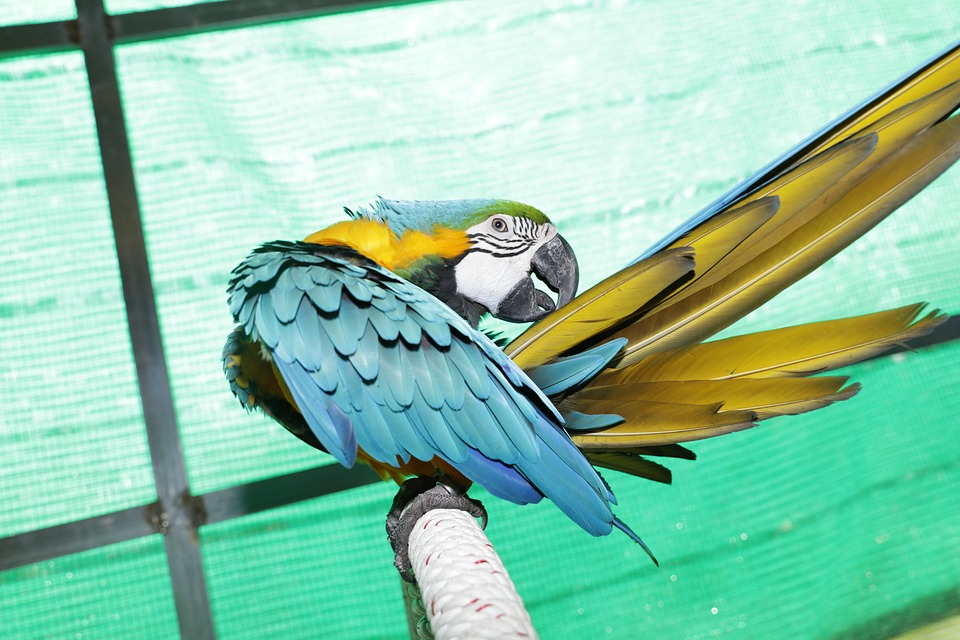Parrots have always been a source of wonder for humans due to their vibrant colors and impressive mimicry skills. However, these intelligent birds are much more than just beautiful pets. They possess incredible learning abilities that allow them to adapt and thrive in their surroundings. In this article, we will explore the fascinating world of parrot behavior, shedding light on their learning abilities, communication methods, and common behavioral traits.
Parrot Learning Abilities:
One of the most well-known abilities of parrots is their vocal mimicry. Certain parrot species, such as African grey parrots and Amazon parrots, are particularly skilled in imitating sounds. These birds can learn to mimic human speech, other animal calls, and even various household sounds. Parrots learn through a process of observation, repetition, and reinforcement, imitating sounds they hear in their environment.
The extent of a parrot’s vocal repertoire can be influenced by factors such as age, species, and individual personality. Young parrots have a greater capacity for learning new sounds, while some species are naturally more inclined towards vocal mimicry than others. Additionally, individual parrots may have their own preferences and limitations when it comes to imitating sounds.
In addition to vocal mimicry, parrots also possess impressive problem-solving skills. These intelligent birds are capable of using tools and solving puzzles to obtain rewards. Researchers have observed parrots using sticks to obtain food or manipulating objects to access hidden treats. Environmental enrichment, such as providing toys and puzzles, plays a crucial role in enhancing their cognitive abilities and keeping them mentally stimulated.
Social Learning:
Parrots are highly social creatures that thrive in the company of others. They exhibit complex behavior in social groups, establishing hierarchies and forming strong bonds with their flock members. Observational learning is a common phenomenon among parrots, where they learn by watching and imitating the behavior of their companions.
Parrots are also known to learn from their human companions. They observe and imitate human actions, such as opening doors or using tools. This ability to learn from humans makes parrots highly trainable and capable of performing specific tasks.
Communication Methods:
Parrots communicate through a combination of vocalizations, body language, and visual signals. Vocalizations include calls, screeches, and songs, each with its own meaning and purpose. Parrots use vocal communication not only to convey information but also to bond with their flock members and express their emotions.
Body language is another important aspect of parrot communication. Feather position, eye dilation, and wing movements can all indicate a parrot’s emotions or intentions. Understanding these signals is crucial for effective parrot-human interaction and helps prevent misunderstandings or conflicts.
Visual signals, such as head bobbing or tail fanning, also play a significant role in parrot behavior. These visual cues can convey messages like excitement, aggression, or submission. Parrots and their human companions can use visual signals for training and communication, creating a deeper understanding and connection between them.
Common Behavioral Traits:
Bonding and pairing is a common behavior observed in certain parrot species. Some parrots are monogamous and form lifelong bonds with their partners. Building a strong bond with your parrot is essential for their well-being and helps foster a trusting relationship.
Play and enrichment are vital for a parrot’s mental stimulation and overall well-being. Play behavior allows them to engage their minds and prevent boredom. Providing toys and activities that challenge their problem-solving skills and encourage physical exercise is crucial for their happiness.
Aggression and challenging behavior can also be observed in parrots. Understanding the causes behind aggressive behavior and implementing appropriate strategies to manage it is essential. Seeking professional help for severe behavioral issues is recommended to ensure the safety and well-being of both the parrot and its human caregivers.
FAQs:
1. Can all parrot species mimic human speech? Different parrot species have varying abilities when it comes to vocal mimicry. While some species are known for their exceptional mimicry skills, others may have limited vocal capabilities.
2. How long does it take for a parrot to learn new words or sounds? The learning curve for parrots can vary depending on the individual bird and its environment. Some parrots may quickly learn new words or sounds, while others may take more time.
3. Are parrots capable of understanding human emotions? Parrots have shown an empathetic nature and can perceive human emotions. They can respond to their human companions’ moods and provide comfort or support.
4. Why do parrots engage in feather plucking? Feather plucking can be a sign of stress, boredom, or underlying health issues. Identifying the cause and providing appropriate solutions, such as environmental enrichment and addressing any health concerns, can help prevent or manage feather plucking behavior.
5. Can parrots be trained to perform specific tasks? Parrots are highly trainable and can learn to perform specific tasks through positive reinforcement training. With patience and consistency, parrots can learn complex behaviors and tricks.
Conclusion:
Parrots possess incredible learning abilities and complex behavioral traits that continue to fascinate researchers and bird enthusiasts. Understanding their remarkable mimicry skills, unique communication methods, and common behavioral traits allows us to build stronger bonds with these intelligent birds. By respecting and nurturing their innate abilities, providing mental and physical stimulation, and seeking professional help when needed, we can create enriching environments that promote their well-being and allow them to flourish.









